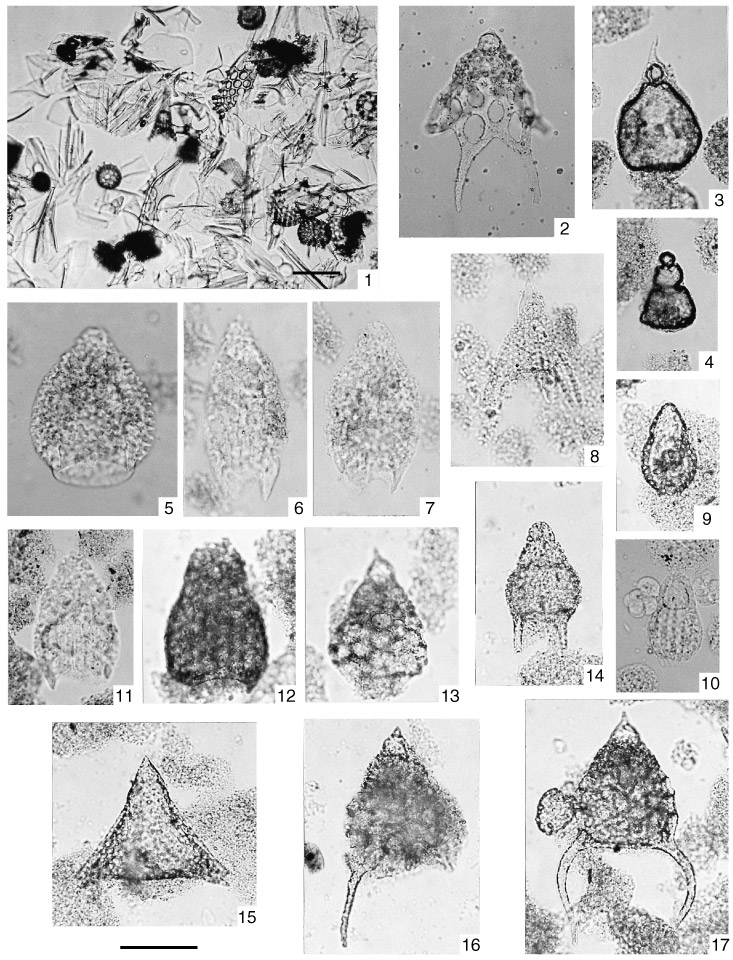Plate 1. Scale bar for fig. 1 = 100 Ám; scale bar for figs. 2-17 = 100 Ám. Codes after sample description are slide description and England Finder coordinates, respectively. 1. Fragmented opaline radiolarians with ash fragments. Sample 165-998A-36X-1, 36-38 cm, ph.1 O40/0. 2. Thyrsocyrtis (Pentalacorys) tetracantha. Fragmented, partially dissolved form. Sample 165-998B-6R-3, 26-28 cm, sl.2 D8/1. 3. Clay-filled radiolarian test showing partial dissolution and replacement of silica. Sample 165-998B-22R-1, 36-38 cm, ph.2 M42/0. 4. Siliceous mold of a radiolarian. Sample 165-998B-22R-1, 36-38 cm, ph.2 M39/0. 5-7, 11. Forms showing strong signs of dissolution particularly in the upper part of the test. Sample 165-998B-34R-1, 35-37 cm, sl.4. (5) O28/0; (6) W8/0; (7) J42/2; (11) W9/0. 8. Sethochytris triconiscus. Morphologically distinctive form even when preservation is less than ideal. Sample 165-998B-17R-3, 37-39 cm, sl.2 H24/1. 9. Dictyoprora sp. Early stage of internal mold formation. Parts of original shell wall still intact. Sample 165-998B-23R-5, 45-47 cm, cs.2 T45/0. 10. Dictyoprora mongolfieri. The refractive index of radiolarians lower than normal. Note also common siliceous molds of small foraminifers. Sample 165-998B-26R-1, 34-36 cm, sl.4 C25/0. 12. Podocyrtis (Lampterium) mitra. Severely dissolved test in which pore bars are thin or absent. Sample 165-998B-20R-3, 38-39 cm, cs.1 N40/0. 13, 16, 17. Thyrsocyrtis (Pentalacorys) triacantha. Tests infilled with clay matrix and severely dissolved. Notice thinning of pore bars and distal appendages. Sample 165-998B-23R-5, 45-47 cm, cs.2 K19/4, K35/0, O9/4. 14. Thyrsocyrtis (Thyrsocyrtis) rhizodon. Strongly dissolved skeleton partly enclosed in clay matrix. Sample 165-998B-23R-5, 45-47 cm, cs.2 L39/3. 15. Lithochytris vespertilio. Distinctive morphological shape facilitates identification despite poor preservation. Sample 165-998B-23R-5, 45-47 cm, cs.2 H10/0. Click on image for close-up.

![]()